'The beauty, music and people of Salento keep me coming back for more'
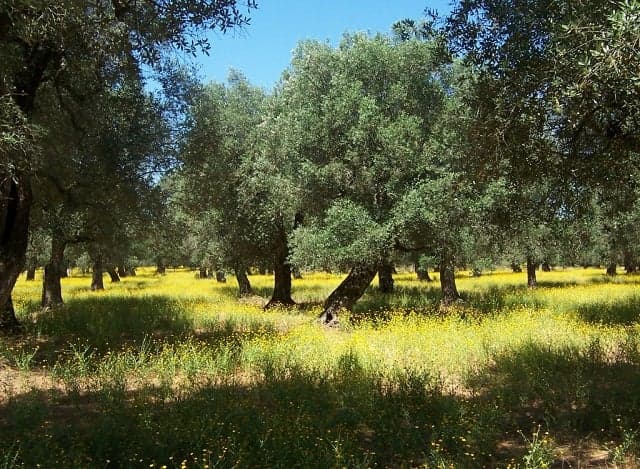
When Audrey Fielding first came to Puglia, she was expecting "a barren landscape", based on what she's heard and read. Instead, she found vibrant towns, chatty locals, a rich culture and delicious food that kept her coming back year after year.
"From what we had read, there were no hills or mountains, and all the large cities and developed farmlands were in the north," she tells The Local.
"So when we arrived in Lecce, we were surprised to find a vibrant walled city with Baroque churches, narrow cobblestone walkways, old palazzos with hanging plants from wrought iron balconies and a Roman amphitheater."
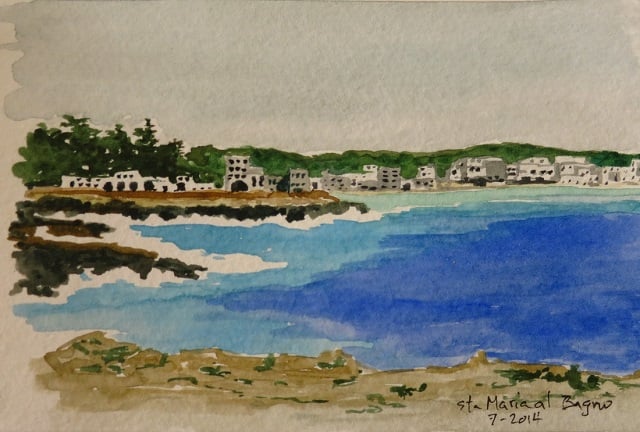
Image: David Fielding
Together with four friends, a mixture of Salento locals and American travellers, Fielding has just published a book.
Salento by Five explores the traditions, food and customs of the region; a labour of love which has taken ten years and was prompted by a question to Fielding from her Salentian friend Luciana: Why do you come back here every year?
"It was a good question!" says Fielding, who was only brought to the region in the first place by a coincidence, and a friendship struck up by chance.
Having begun her love affair with Italy during two stints studying the language in Perugia and Bologna, a classmate's talk of Puglia and its "strong women, peasant culture, music, and warm seas" intrigued the teacher and writer, but it wasn't until several years later that she would visit the region.
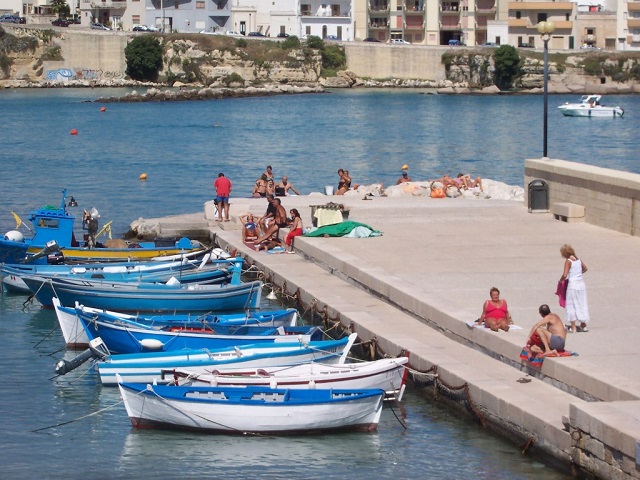
Image: David Fielding
At Rome's airport, on her way to Namibia for a teaching consultancy, Fielding got talking to an Italian woman and mentioned her plans to visit Puglia. The woman advised her to get the train rather than driving, then handed the American her business card. "When you get to the end of the line in Lecce, rent a car and come and see me," she said.
Fielding says she and her husband David did just that - something persuaded them to follow the stranger's advice. After a six-hour train journey, they reached Racale, a small town in the heel of Italy's boot, and found the travel office where the woman worked.
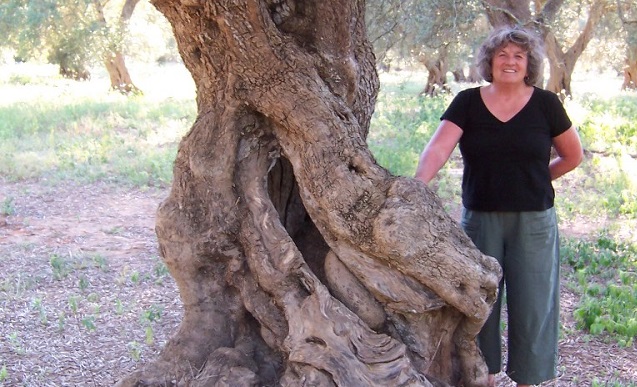
Audrey Fielding with one of the olive trees. Image: David Fielding
"I'll never forget the moment when we stood outside the door and hesitated," says Fielding. "We thought, should we do this? Is it too forward? Will she even remember me? But we had driven to her small town; we were committed."
It almost seemed that the woman had been expecting them, simply saying "You made it" as the couple walked through the door, and inviting them for a coffee in the bar next door.
"That was the beginning," says Fielding.
Her earliest impressions of the region came from long drives, exploring outside the city gates and following the gentle hills filled with olive trees.
"We drove through towns, past small stores and central piazzas filled with locals, mostly women, out shopping and chatting with each other while men, mostly elderly, sat on benches in central piazzas, often a castle or a cathedral nearby.
"In early spring, red and yellow poppies cover the ground beneath the trees in the many olive groves. So many of the trees are old and gnarled with their own personalities and yet still producing olives. The stone walls lining the country roads are as ancient as the trees."
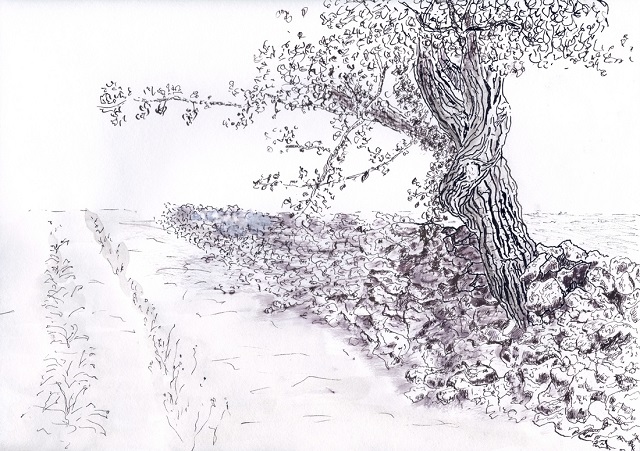
Image: David Fielding
Reeled in by its beauty, the couple continued to visit the region, spending time there every year and learning more about its history and customs.
They researched, for example, Salento's Greek roots, and how they are kept alive today in Grecìa Salentina (Greek-speaking Salento). There, people speak the Griko dialect and often host Greek music or food festivals.
Salento's own dialect can also be heard in its folk music, and Fielding recommends that visitors seek out local music haunts to see how musical performances "spontaneously erupt on warm nights".
"Tamburellos (large tambourines) appear, fingers striking the skin rapidly, non-stop until everyone is moving to the beat," she says. "If you’re lucky, someone will start to dance the pizzica, the ancient dance descended from efforts to cure poor women supposedly bitten by a spider and made ill. The only remedy was to whirl to the beat of the tambourine until the spider’s poison has dissipated. Nowadays, it has become a popular partner dance at music festivals, graceful with flirtatious spins."
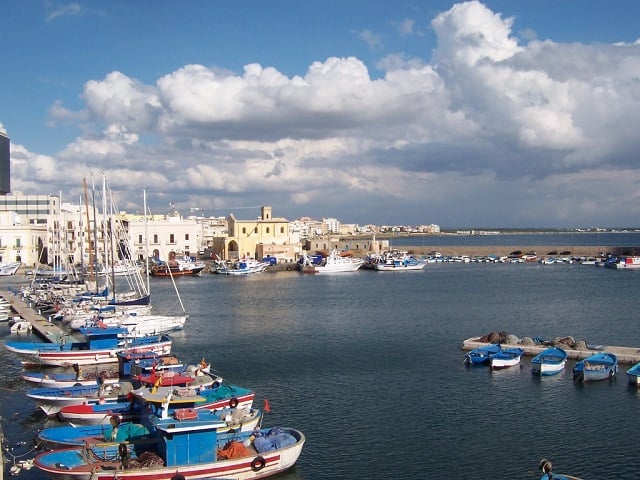
Image: David Fielding
A short visit might allow you a brief glimpse of the region's unique history and customs, but when it comes to a longer stay, Fielding believes there are two key ways to fit in and make friends with locals. First, making an effort with the language - Italian to start with, but the dialect too if possible - and second, showing a healthy interest in Salento's cuisine.
"Everyone greets everyone in Italy, when entering a store or business, when walking in the piazza on summer evenings. Conversations often begin spontaneously in restaurants or at the weekly market, and Salentinians are pleased and surprised when we speak Italian - even with the occasional grammatical error!" she says.
"One American friend of ours has studied the local dialect, and her use of it immediately draws disbelief, laughter and praise. Most Salentinians have been raised speaking the local dialect at home while learning Italian in school."
As for the food, Fielding explains that it's central to life in Salento, perhaps even more so than in other Italian regions. Surrounded by the sea on three sides, seafood is an essential part of the diet, while many people own olive groves and vineyards to make their own oil and wine.
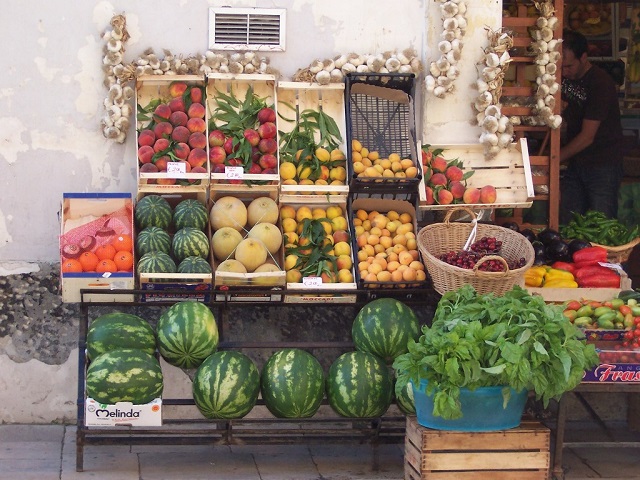
Image: David Fielding
"On market days, vendors will always give you a taste, a recipe if you ask, and some extra greens for free," says Fielding. "While waiting for the bus to go back into town, women exchange and argue about recipes - no one prepares a local dish the same way and each one insists that her way is the best."
Working on the Salento by 5 project, which over the course of ten years transformed from a vague notion to a published book, Fielding and her friends shared stories and experiences of the region.
"Last autumn in Salento, at the end of a local reception for our book, an older Italian stood up and said, 'Ok, we've heard about the beauty of the olive groves, the sea, the good food; now tell us why you really come back'", recalls the writer.
"Why did we return? A simple answer: the people. Everyone broke into applause."
Salento by 5 is a collection of stories, travel tips, drawings and recipes about the southern region, written by three local Italians and two American travellers. Find out more about the book on its website or buy it here.
Do you have a story to tell about Italy? We are always on the lookout for guest blogs or possible interviewees - get in touch at [email protected]
Comments
See Also
"From what we had read, there were no hills or mountains, and all the large cities and developed farmlands were in the north," she tells The Local.
"So when we arrived in Lecce, we were surprised to find a vibrant walled city with Baroque churches, narrow cobblestone walkways, old palazzos with hanging plants from wrought iron balconies and a Roman amphitheater."

Image: David Fielding
Together with four friends, a mixture of Salento locals and American travellers, Fielding has just published a book.
Salento by Five explores the traditions, food and customs of the region; a labour of love which has taken ten years and was prompted by a question to Fielding from her Salentian friend Luciana: Why do you come back here every year?
"It was a good question!" says Fielding, who was only brought to the region in the first place by a coincidence, and a friendship struck up by chance.
Having begun her love affair with Italy during two stints studying the language in Perugia and Bologna, a classmate's talk of Puglia and its "strong women, peasant culture, music, and warm seas" intrigued the teacher and writer, but it wasn't until several years later that she would visit the region.
Image: David Fielding
At Rome's airport, on her way to Namibia for a teaching consultancy, Fielding got talking to an Italian woman and mentioned her plans to visit Puglia. The woman advised her to get the train rather than driving, then handed the American her business card. "When you get to the end of the line in Lecce, rent a car and come and see me," she said.
Fielding says she and her husband David did just that - something persuaded them to follow the stranger's advice. After a six-hour train journey, they reached Racale, a small town in the heel of Italy's boot, and found the travel office where the woman worked.
Audrey Fielding with one of the olive trees. Image: David Fielding
"I'll never forget the moment when we stood outside the door and hesitated," says Fielding. "We thought, should we do this? Is it too forward? Will she even remember me? But we had driven to her small town; we were committed."
It almost seemed that the woman had been expecting them, simply saying "You made it" as the couple walked through the door, and inviting them for a coffee in the bar next door.
"That was the beginning," says Fielding.
Her earliest impressions of the region came from long drives, exploring outside the city gates and following the gentle hills filled with olive trees.
"We drove through towns, past small stores and central piazzas filled with locals, mostly women, out shopping and chatting with each other while men, mostly elderly, sat on benches in central piazzas, often a castle or a cathedral nearby.
"In early spring, red and yellow poppies cover the ground beneath the trees in the many olive groves. So many of the trees are old and gnarled with their own personalities and yet still producing olives. The stone walls lining the country roads are as ancient as the trees."

Image: David Fielding
Reeled in by its beauty, the couple continued to visit the region, spending time there every year and learning more about its history and customs.
They researched, for example, Salento's Greek roots, and how they are kept alive today in Grecìa Salentina (Greek-speaking Salento). There, people speak the Griko dialect and often host Greek music or food festivals.
Salento's own dialect can also be heard in its folk music, and Fielding recommends that visitors seek out local music haunts to see how musical performances "spontaneously erupt on warm nights".
"Tamburellos (large tambourines) appear, fingers striking the skin rapidly, non-stop until everyone is moving to the beat," she says. "If you’re lucky, someone will start to dance the pizzica, the ancient dance descended from efforts to cure poor women supposedly bitten by a spider and made ill. The only remedy was to whirl to the beat of the tambourine until the spider’s poison has dissipated. Nowadays, it has become a popular partner dance at music festivals, graceful with flirtatious spins."
Image: David Fielding
A short visit might allow you a brief glimpse of the region's unique history and customs, but when it comes to a longer stay, Fielding believes there are two key ways to fit in and make friends with locals. First, making an effort with the language - Italian to start with, but the dialect too if possible - and second, showing a healthy interest in Salento's cuisine.
"Everyone greets everyone in Italy, when entering a store or business, when walking in the piazza on summer evenings. Conversations often begin spontaneously in restaurants or at the weekly market, and Salentinians are pleased and surprised when we speak Italian - even with the occasional grammatical error!" she says.
"One American friend of ours has studied the local dialect, and her use of it immediately draws disbelief, laughter and praise. Most Salentinians have been raised speaking the local dialect at home while learning Italian in school."
As for the food, Fielding explains that it's central to life in Salento, perhaps even more so than in other Italian regions. Surrounded by the sea on three sides, seafood is an essential part of the diet, while many people own olive groves and vineyards to make their own oil and wine.
Image: David Fielding
"On market days, vendors will always give you a taste, a recipe if you ask, and some extra greens for free," says Fielding. "While waiting for the bus to go back into town, women exchange and argue about recipes - no one prepares a local dish the same way and each one insists that her way is the best."
Working on the Salento by 5 project, which over the course of ten years transformed from a vague notion to a published book, Fielding and her friends shared stories and experiences of the region.
"Last autumn in Salento, at the end of a local reception for our book, an older Italian stood up and said, 'Ok, we've heard about the beauty of the olive groves, the sea, the good food; now tell us why you really come back'", recalls the writer.
"Why did we return? A simple answer: the people. Everyone broke into applause."
Salento by 5 is a collection of stories, travel tips, drawings and recipes about the southern region, written by three local Italians and two American travellers. Find out more about the book on its website or buy it here.
Do you have a story to tell about Italy? We are always on the lookout for guest blogs or possible interviewees - get in touch at [email protected]
Join the conversation in our comments section below. Share your own views and experience and if you have a question or suggestion for our journalists then email us at [email protected].
Please keep comments civil, constructive and on topic – and make sure to read our terms of use before getting involved.
Please log in here to leave a comment.